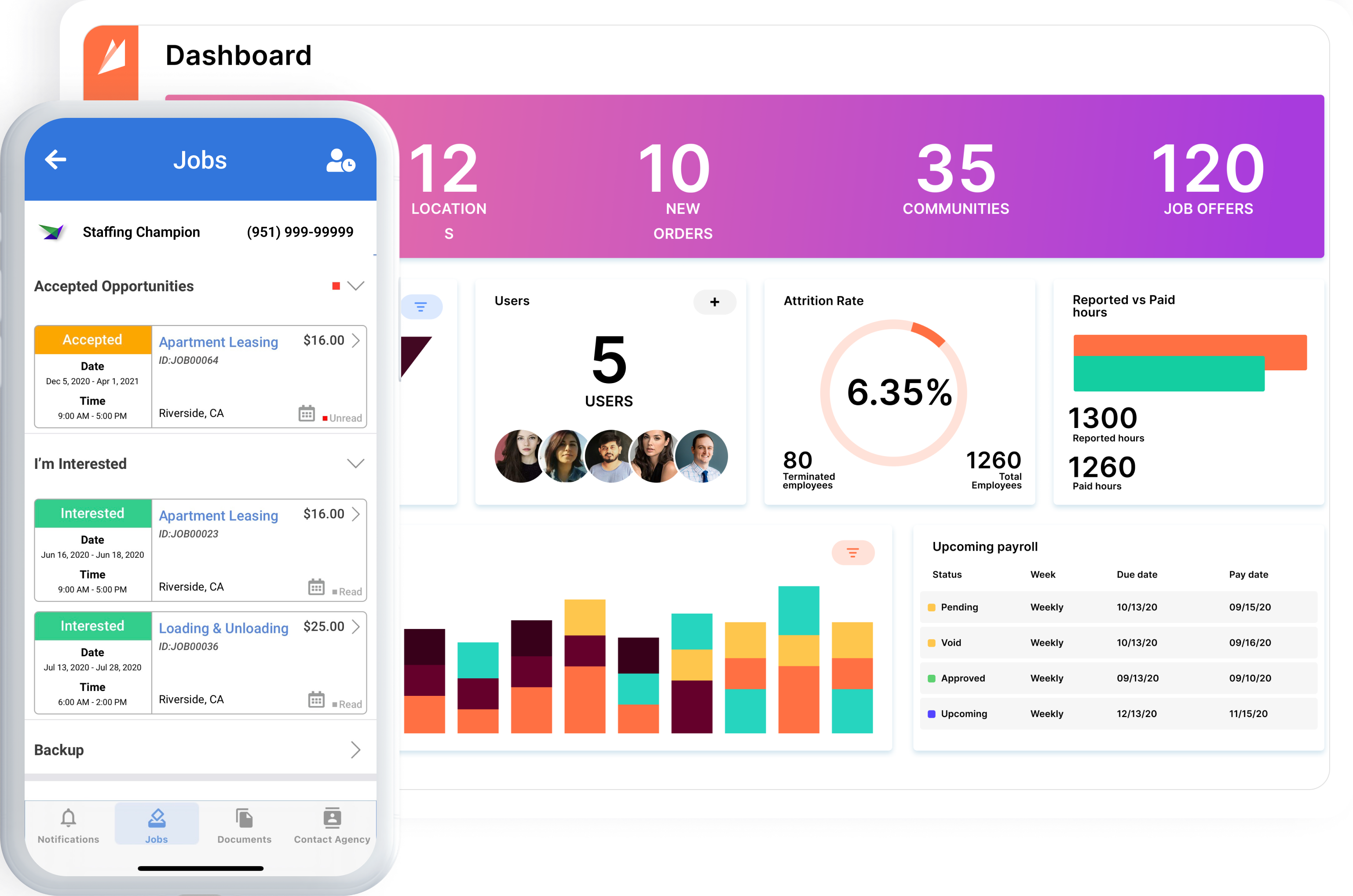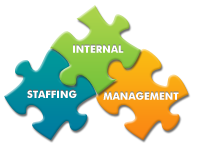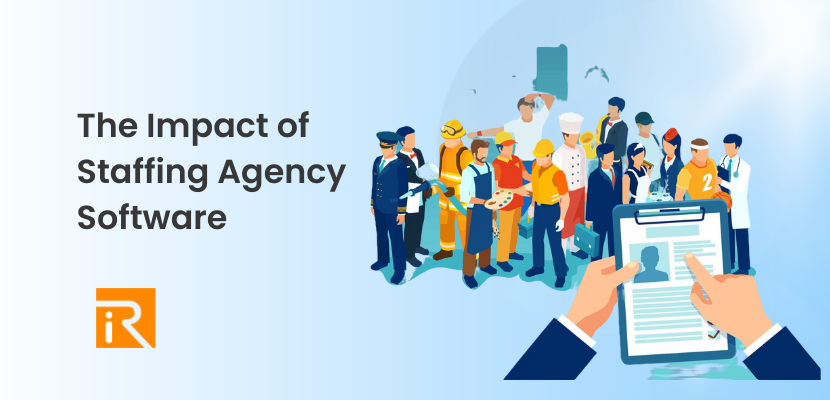Streamline Procedures with Advanced Staffing Management Software
Streamline Procedures with Advanced Staffing Management Software
Blog Article
Releasing the Power of Data: Enhancing Human Resources Strategies With Cutting-Edge Staffing Management Software
In the swiftly evolving landscape of human sources, the utilization of data has become a crucial force in shaping business success. As firms make every effort to remain agile and affordable, the assimilation of sophisticated staffing monitoring software program attracts attention as a transformative tool in enhancing human resources procedures. By using the power of information analytics, organizations can not just boost their recruitment techniques but additionally enhance worker retention and productivity. The harmony in between data-driven understandings and advanced technology presents a compelling chance for HR experts to change their approach towards talent administration.
Value of Data-Driven Human Resources Strategies
Why have data-driven HR methods come to be crucial in modern organization procedures? In today's affordable and busy business atmosphere, organizations are significantly relying on data-driven understandings to make educated choices. Data-driven HR strategies make it possible for companies to maximize their labor force management, recruitment procedures, and worker engagement efforts. By analyzing information connected to staff member performance, turn over prices, and ability gaps, human resources departments can determine fads, anticipate future demands, and establish positive services to resolve difficulties.
Data-driven HR strategies additionally play an essential duty in enhancing staff member complete satisfaction and retention. Via the evaluation of employee feedback, efficiency testimonials, and training end results, HR experts can tailor individual advancement strategies, identify high-potential workers, and foster a culture of continual knowing and growth within the company. Furthermore, data-driven insights make it possible for human resources teams to align their techniques with the total business objectives, guaranteeing that talent management initiatives directly add to business success.
Benefits of Staffing Management Software Program
Utilizing staffing management software simplifies the employment and onboarding processes for human resources departments, improving efficiency and precision in talent procurement. One substantial benefit of this software application is the ability to centralize candidate information, making it easily obtainable for employment groups. By having all applicant information in one area, human resources specialists can effectively track prospect development, connect successfully with possible hires, and guarantee a seamless employment experience.
Moreover, staffing administration software application often consists of functions such as return to parsing and keyword phrase matching, which assist in quickly recognizing leading prospects that match the task demands. This automation minimizes the time invested in manual resume screening, permitting HR team to concentrate on more calculated tasks. staffing management software. Additionally, these systems can incorporate with task boards and social media sites platforms, increasing the reach of job posts and bring in a diverse pool of candidates
In addition, analytics and reporting tools within staffing administration software give useful insights into employment metrics, such as time-to-fill and cost-per-hire. This data-driven strategy makes it possible for HR teams to make informed decisions, enhance recruitment methods, and boost total employing procedures. By leveraging these advantages, companies can streamline their skill procurement initiatives, boost prospect experience, and ultimately construct a strong labor force.
Enhancing Recruitment Procedures With Information
Employing data-driven approaches in recruitment processes has become progressively vital for organizations looking for to enhance their ability acquisition outcomes. By leveraging information, companies can make even more educated decisions throughout the recruitment lifecycle, inevitably resulting in far better hires and enhanced retention rates. One crucial means data enhances recruitment procedures is by optimizing job posts based on understandings from past effective hires. Examining metrics such as the source of top talent, time to load placements, and prospect high quality can help recruiters tailor task summaries to attract the appropriate candidates efficiently.
In addition, data analytics can simplify the testing and selection process by determining patterns in prospect qualifications and efficiency indicators. This makes it possible for recruiters to concentrate their initiatives on candidates that are most likely to succeed in the role, saving time and sources. Furthermore, data-driven employment approaches can help minimize predisposition in the employing process by providing unbiased understandings into this candidate qualifications and possible fit within the organization. On the whole, incorporating information into recruitment procedures empowers organizations to make smarter working with decisions and develop high-performing groups.
Improving Worker Retention Via Innovation

One method modern technology can boost worker retention is through using staff member involvement systems. These systems allow for real-time comments, recognition, and interaction between workers and management, promoting a society of admiration and assistance. In addition, technology can make it possible for personalized learning and growth programs tailored to private staff member requirements and career desires, raising task fulfillment and commitment.
In addition, information analytics devices can assist companies recognize patterns and patterns connected to employee turn over, enabling them to take aggressive procedures to address possible concerns prior to they escalate. On the whole, by leveraging technology properly, companies can produce an extra encouraging and appealing workplace that urges staff members to expand and stay within the company.
Maximizing Labor Force Performance With Data

Through the evaluation of data, human resources departments can identify patterns and patterns recommended you read that influence efficiency degrees. By tracking employee work hours and project completion rates, companies can maximize work routines to ensure that tasks are effectively dispersed amongst team participants. In addition, data can expose ability voids within the labor force, allowing human resources to execute targeted training programs that boost employee capabilities and total productivity.
Furthermore, data-driven performance assessments allow managers to supply certain feedback and support to staff members, fostering a culture of continuous renovation. In general, leveraging information to make best use of workforce efficiency is a calculated strategy that equips companies to accomplish their goals properly and successfully.
Final Thought
In final thought, utilizing innovative staffing monitoring software can significantly improve HR techniques by leveraging the power of information. By integrating data-driven recruitment processes, boosting staff member retention through technology, and making the most of workforce productivity, companies can improve their operations, make more informed choices, and ultimately accomplish greater success in handling their human capital. Embracing these technological improvements is critical in the ever-evolving landscape of personnel administration.
Data-driven HR techniques enable firms to optimize their workforce monitoring, employment processes, and employee engagement initiatives. By assessing information related to worker efficiency, turn over prices, and news skill gaps, HR divisions can determine fads, predict future requirements, and create proactive remedies to address obstacles.

Report this page